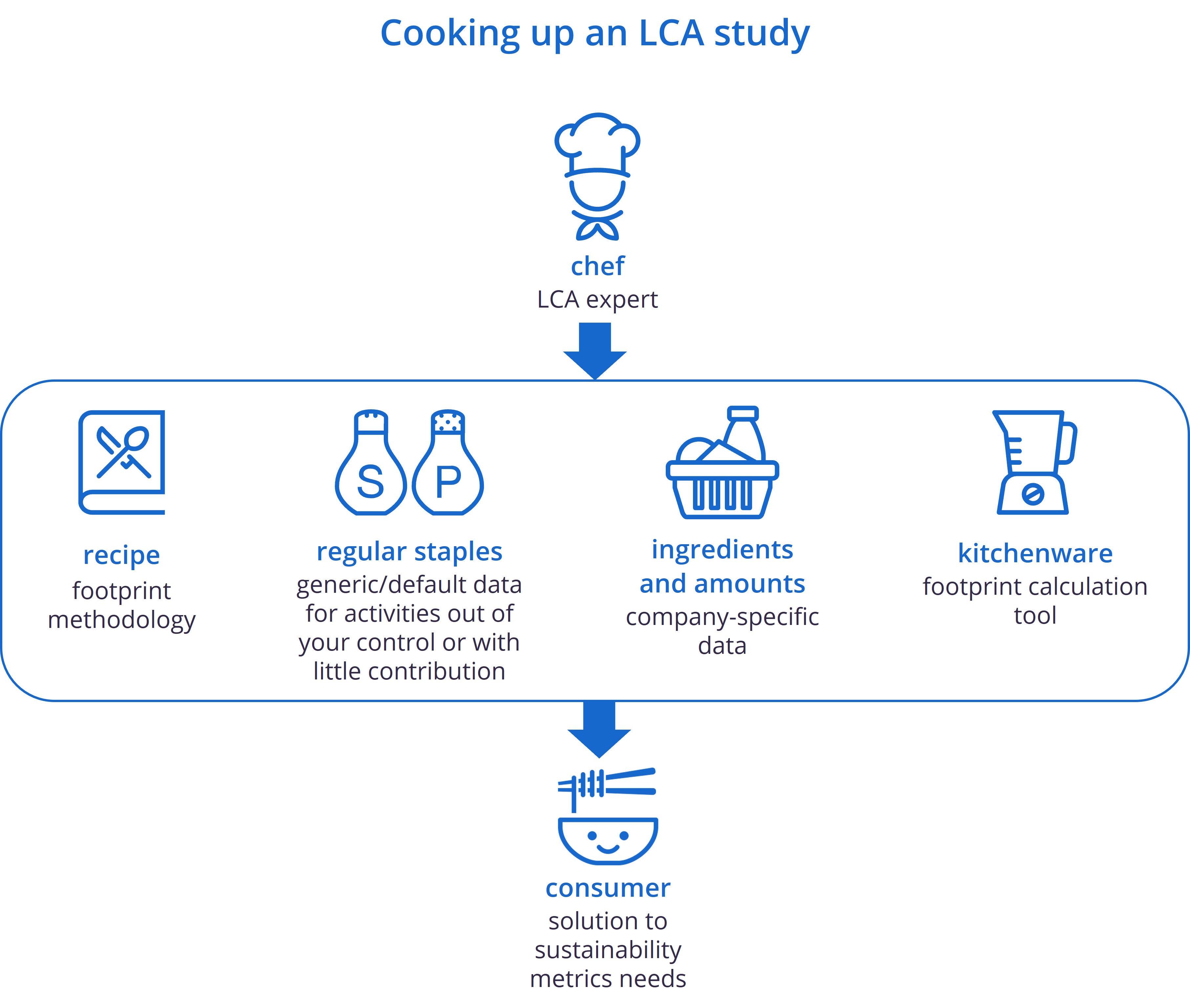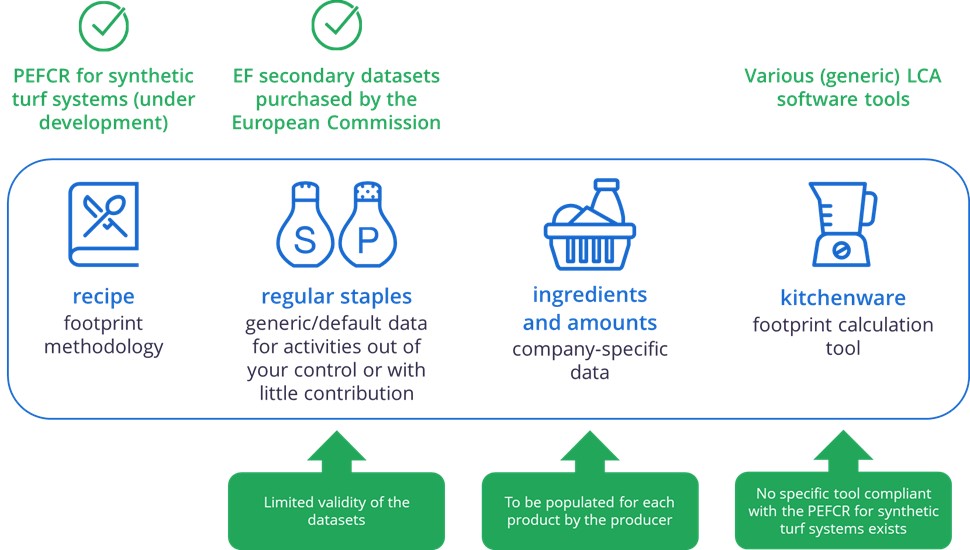Cooking up an LCA study
There are many advantages to life cycle assessment (LCA). It’s transparent, science-based, and can result in actionable information to reduce your environmental impacts or communicate with customers. However, it can be daunting to get started because there are many different elements to consider. It’s not always obvious how they fit together and what needs your attention. In this article, Marisa Vieira, Principal Consultant, shows that thinking about how to do LCA is not that much more difficult than thinking about how to bake a quiche for dinner.
Having the right items at hand
What do you need to have at hand to cook a good meal? Even for the most complex recipes, we’re only looking at four different elements:
- The recipe. This will tell you whether you’re going to end up with a quiche or a salad or a stir-fry. In LCA, the recipe is the methodology you choose. Ideally, you want a methodology that’s as specific as possible to your product or organization, to ensure that your results can be compared to the calculations of other organizations in your sector. Examples of these specific methodologies are Life Cycle Metrics for Chemical Products, HortiFootprint Category Rules, or The Global GHG Accounting and Reporting Standard for the Financial Industry.
- The standard ingredients almost everyone uses. Salt, pepper, butter or olive oil. In LCA, this category contains the generic or default data on activities that are outside your control – often energy generation, transport and waste treatment. For activities that have low contribution and that are not company-specific, default values to be used can also be agreed upon, e.g. 30 km distance between municipal waste collection and waste disposal/sorting facility.
- Recipe-specific ingredients and amounts. A sheet of fresh puff pastry, 300g of sweet potato, 300g of beetroot, 100g of feta cheese, etc. In your LCA, this is your company-specific information, such as the bill of materials of the product you want to assess, a specific processing technique, or a specific type and source of energy.
- Kitchenware. The quiche form, the oven and the baking paper. At PRé, we recommend the best multi-purpose tool we know – because we developed it: SimaPro LCA software. Additionally, for certain specific types of study, a dedicated tool may be exactly what you need. For instance, our packaging-specific solution is called the P-ACT.
Additionally, there are people involved in a good dinner party and in the planning of an LCA. First, you need dinner guests. They inspire what you’re going to cook. You’ll want to feed them something they like, something that suits their palate. And, especially if you’re going to cook for paying customers or at an event, there are some rules you need to follow for everyone’s safety. In LCA, there are specific deliverables for specific audiences: environmental product declarations (EPD) for the construction sector, ISO-compliant studies for whenever you need to make a claim and communicate the results externally, or – if you need comparability with peers – product category or organizational sector rules. It’s always a good idea to read and follow your recipe carefully, especially if you think that specific rules may apply.

What brings all those things together is the cook. But you don’t need to be a Michelin star cook to bake an excellent quiche. And you don’t need to be an expert LCA practitioner to do a reliable, valuable LCA – provided that all the elements mentioned above are available in the right amounts. With a good recipe, the right kitchenware and access to both regular staples and high-quality ingredients, beginning LCA practitioners too can provide meaningful insights – like most 20-year-olds can prepare a simple but nutritious meal.
Obviously, the more experience and skills a cook has, the less time and effort a study will cost. Additionally, an experienced cook can more easily answer questions from the guests, invent recipes with new ingredients or for new guests, or train aspiring cooks. He or she may even suggest additional features to the supplier of the kitchenware.
The proof of the pudding is in the eating
Of course, in real life, you sometimes have to make do with what you have. Sometimes, there’s no standard recipe for what you are trying to achieve. Sometimes, generic information is abundantly available and sometimes it’s not. Sometimes, the right kitchenware is not available but you can use one that still allows you to prepare the meal. The right amount of recipe-specific ingredients is something you’ll always have to provide but anyone with a shopping list is able to do the groceries. Ideally, this should be your only duty!

The more you need to develop a recipe from scratch or have difficulty getting the right ingredients, the more the experience level of your cook becomes important. Fortunately, cooks and LCA practitioners alike often offer their services. At PRé, we are always happy for businesses trying to stock their LCA kitchens. In the end, we’d like to get you to a place where you can conduct LCAs independently. And until that time, we’re here to help you get all the elements ready.
Marisa Vieira
Director of Solutions
The time of the industrial revolution is over. Now it is time for the green revolution to go full steam ahead! Everybody needs to be involved in this process, therefore I aim to guide individuals and businesses in understanding the trade-offs between impacts. This will help them make informed decisions, which will truly help sustainable living thrive."